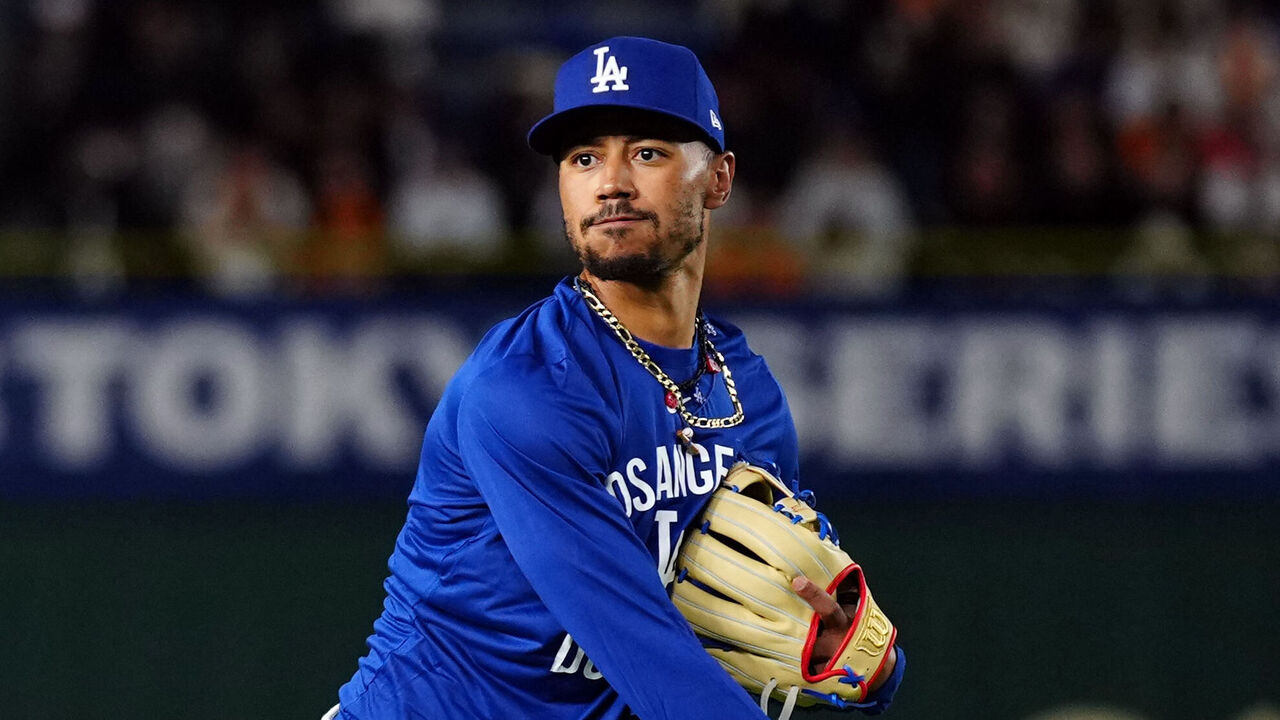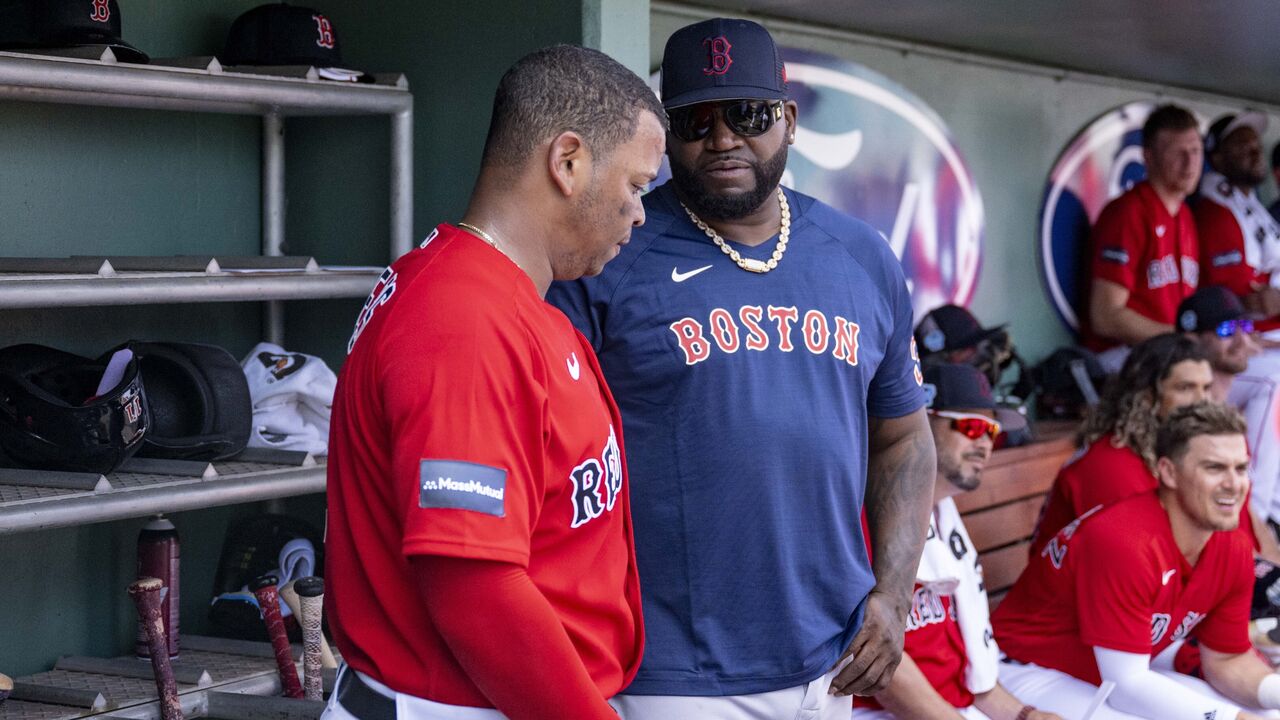Red Sox cure Devers headache by creating a new one
There is a universe where the Rafael Devers trade works out well for the Boston Red Sox. It's just probably not this one.
Since his first full season in 2018, Devers ranks 10th in the majors in homers (204), fifth in RBIs (665), 15th in slugging (.511) and 33rd in wRC+ (127).
Despite a slow start to 2025, Devers still led the team in homers, and was third in the American League in RBIs, before Boston traded him to the San Francisco Giants on Sunday evening.
Devers is one of the best 30 or so hitters in the game, and in the midst of his age-28 season, he's in his prime. While he's not Aaron Judge (who is?), he can hit in the middle of any contender's lineup.

Given their disappointing season, it's no surprise to see the Red Sox become sellers. But moving on from Devers - and so early in his lengthy contract extension - is a shock.
And it's a move that comes with major downside.
Boston was supposed to be a club on the rise. Devers was supposed to be a lineup anchor to build around. He was supposed to help relieve pressure on elite prospects like Marcelo Mayer, Roman Anthony, and Kristian Campbell, and young regulars Wilyer Abreu and Ceddanne Rafaela. Teams don't typically ease logjams by getting rid of stars.
Of course, there's another layer to the deal: This is the same club that traded Mookie Betts not so long ago. Many in Red Sox Nation are lamenting the team shedding another star-level talent. And this is a much different trade: Betts was at least nearing free agency, whereas Devers was on a long-term contract.

This trade is a head-scratcher in many ways, including the light return.
Coming over from the Giants, Jordan Hicks owns a 6.47 ERA in the second year of a four-year, $44-million contract. Left-hander Kyle Harrison is promising but uneven - the Red Sox optioned him to Triple-A on Sunday after the trade - and the two prospects they added aren't elite talents.
This deal was more motivated by shedding salary and unloading a disgruntled player than by fielding the best team possible or maximizing the return.
Despite all that, there is a legitimate case for the trade from Boston's perspective.

The Boston Globe's Pete Abraham reported, citing sources: "The team's feeling was that a $313.5 (million) contract comes with responsibilities to do what is right for the team and that Devers did not live up to those responsibilities. They had enough and they traded him."
The Red Sox were especially annoyed Devers was unwilling to embrace switching from third base to designated hitter after the club signed Alex Bregman in the offseason, and also that he was so public in his disdain for the idea. Then when they asked Devers to switch to first base after Triston Casas was injured, he refused, again expressing his frustration publicly. Devers never did play an inning at first base in Boston.
That isn't the flexibility or leadership a club wants from its highest-paid player.
CBS Sports' Julian McWilliams reports that Devers requested a trade during spring training, although a source told MassLive's Chris Cotillo that he didn't demand a move. But wasn't it also up to the Red Sox to communicate better and soothe a star player's ego in order to make the relationship work? Could the club have done more to repair the relationship?
The other issue: The Red Sox still owed Devers another eight-plus years and $250 million on his $313.5-million extension. Most teams aren't interested in paying a DH $30 million a year; today's game prioritizes flexibility.
Today the #SFGiants reportedly acquired DH Rafael Devers (-$40.3M surplus trade value) from the #RedSox in exchange for LHP Kyle Harrison ($10.9M), OF James Tibbs ($9.1M) and RHPs Jordan Hicks (-$18.5M) and Jose Bello ($0.4M).
— Baseball Trade Values (@BaseballValues) June 15, 2025
Deal is rejected by our model as an overpay by SF.
There are analytical models that consider this an overpay by the Giants.
But the general facts of the move remain the same: The Red Sox traded a star, in his prime, who was signed to a long-term deal.
Yes, there is a universe in which Hicks' performance finally matches his raw talent. There is a universe in which Harrison, a former top prospect, figures out a new approach or key pitch under Red Sox pitching coach Andrew Bailey.
There is also a universe in which Devers ages poorly and his contract goes underwater quickly. His bat speed is down this season, but he's still squaring up pitches at an elite level.
But in this universe right now, Devers is a top 30-40 hitter in baseball. The threat of severe performance decline should be a few years away. And there aren't many players like him in their prime.
Paying a potential DH a quarter of a billion dollars over the next eight seasons might seem unpalatable, but Devers' career wRC+ (126) is not that far off Vladimir Guerrero Jr.'s 136 mark. Guerrero just signed a $500-million extension. Another bat-first star, Juan Soto, just signed a $765-million deal.

The Red Sox lost a cost-controlled star bat by making this trade. If they go back to the open market for a premium hitter, they won't find one who's more affordable than Devers. Just ask the Giants, who have struggled for years to attract top-level talent.
The Red Sox aren't a small-market franchise; Devers' contract shouldn't have been an issue. Any time a club sheds salary, we can be skeptical as to whether the exact dollar amount saved in a trade will be reinvested in major-league payroll.
There are pathways where this deal works for the Red Sox, but there's more downside than upside. They can't afford to miss. As difficult as Devers might have been to manage, it'll be even more difficult to replace his bat.
Travis Sawchik is theScore's senior baseball writer.